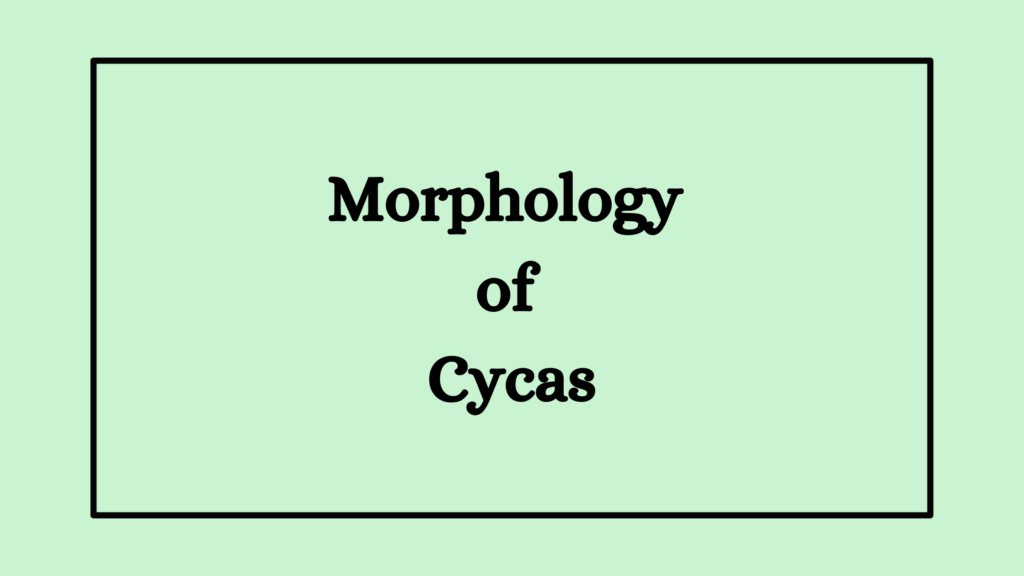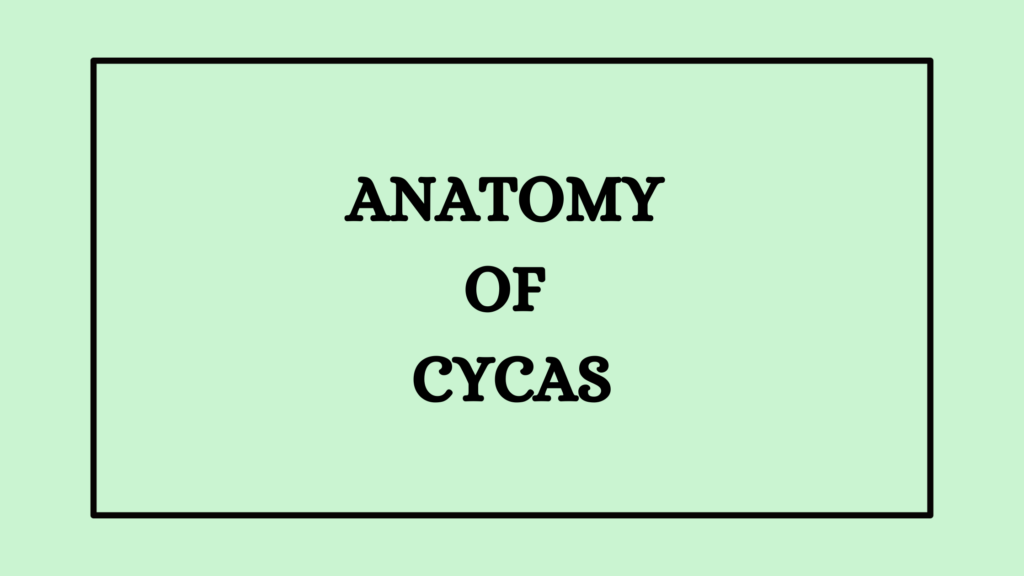Cycas is an evergreen perennial plant with pinnately compound leaves. It is the only living genus in the family Cycadaceae, which includes more than 100 species. Cycas are mainly found in Asian regions, and some species are native to Australia, China, and India.
The morphology of Cycas shows that it resembles a palm tree. The leaf arrangement creates a crown at the top, giving the appearance of a tree about 12 m in height. The tallest species of Cycas media can grow up to 20 m.
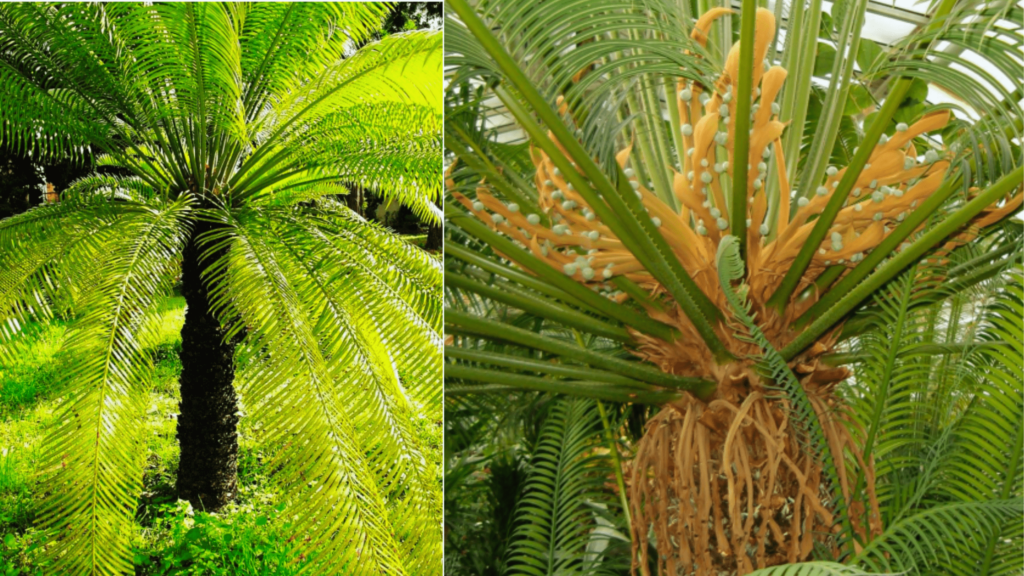
They produce naked seeds that are not enclosed within the ovary. Moreover, Cycas plants are dioecious, having male and female plants separate.
Morphology of Cycas Stem
Cycas has an unbranched, columnar, and erect stem. Certain species of Cycas form branches when injured or upon attaining maturity.
- The young stem is underground and tuberous.
- They become columnar and aerial as they grow.
- The matured stem has rhomboidal leaf bases and scars formed by the scale leaves.
- Female plants have additional scars left by their megasporophylls.
- The leaf bases and scars form a thick armor-like layer that projects out of the stem.
- These scars are arranged in rows.
- Counting these rows helps determine the age of the plant.
Morphology of Cycas Leaves
The Cycas plant produces two types of leaves- foliate and scale leaves.
- Cycas plant has dimorphic and pinnately compound leaves.
- They are large and long, arranged into a crown at the top.
- Leaves are assimilatory in function and often alternate with scale leaves.
- Scale leaves are brown and small.
Foliage Leaves of Cycas
Foliage leaves of Cycas are formed every year. They are coiled when they emerge. The young leaves have a midrib but no lateral veins. Moreover, foliage leaves will gradually fall off which will leave leaf bases on the stem. The characteristics of foliage leaves are as follows.
- They are formed as a single crown arranged in a whorl.
- In some species, foliage leaves are formed twice a year.
- Young plants often have a single leaf while matured plants may have up to 100 leaves.
- They are pinnately compound and grow up to 8 ft in length.
- Each foliage leaf has a petiole with a rhomboidal base leading to a rachis.
- The petiole may have spines that transition into leaflets.
- The defoliation creates a scar on the stem.
Leaflets of Cycas
Leaflets are arranged laterally on the rachis of Cycas.
- They are dichotomously branching, have a leathery texture, and are sterile.
- They may be lanceolate with entire having pointed apices.
- Leaflets are opposite or alternately arranged on the rachis.
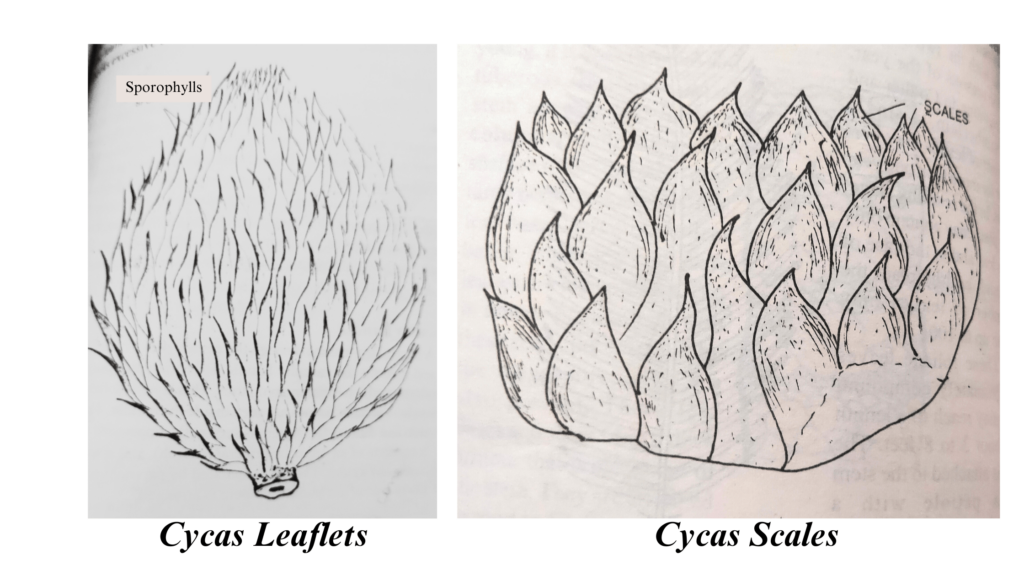
Scale Leaves of Cycas
Scales of Cycas are brown, triangular in shape, and have hairs.
- They cover the tips of the stem.
- They are broad at the base and pointed at the apex.
- Scale leaves are slightly bent or twisted at the tips.
- They leave scars on the stem upon defoliation.
Morphology of Cycas Roots
Cycas have two types of roots- normal and coralloid. The normal roots can grow deeper into the soil and are a taproot system. Cycas seedlings have a thick and tuberous taproot system. They are replaced by adventitious roots as they mature. These adventitious roots help in fixation and absorption.
Some adventitious roots grow laterally along the soil and are infected with bacteria, fungi, and Cyanobacteria. Such roots form the coralloid roots.
Coralloid Roots
Coralloid roots are specialized roots that resemble corals. These roots have a symbiotic association of algae, fungi, and bacteria inside their cells. These microbes help Cycas with its growth.
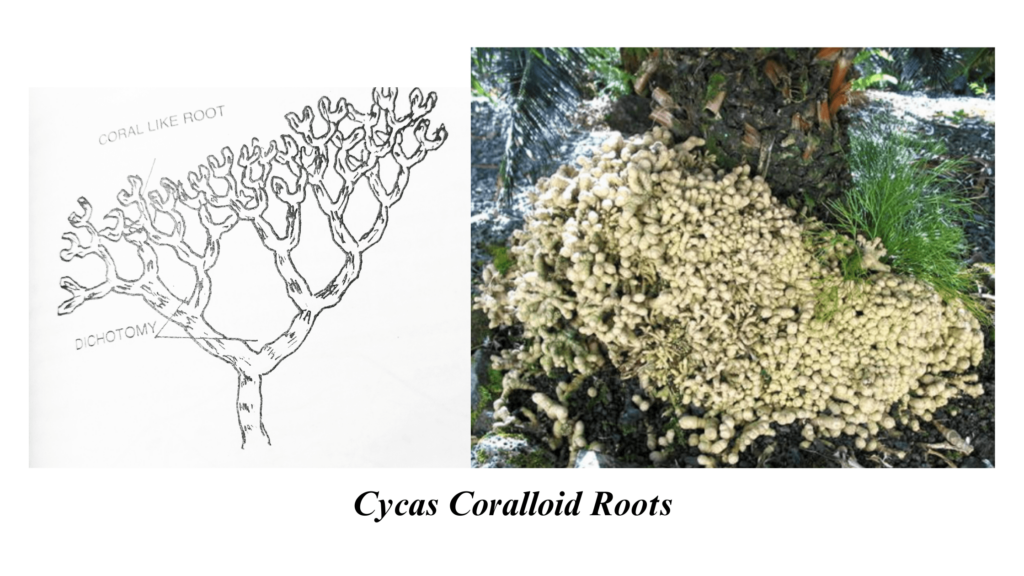
The roots of Cycas get infected by bacteria. Cyanobacteria such as Anabaena cycadacearum enter the root cortex. This causes the infected roots to distort and they produce a mass of tubercles that are exposed. These tubercles appear like a knob or coral. This is why the Cycas roots are called coralloids. They are also called corallorhiza.
The Cyanobacteria helps with nitrogen fixation and it has a symbiotic relationship with the roots. Another type of Cyanobacteria that forms symbiotic relationships with Cycas roots is Nostoc.
Coralloid roots have irregular shapes and are negatively geotropic. Growing upwards, rather than growing into the soil.
References
- Abraham P C. Bryophytes, Pteridophytes, Gymnosperms & Paleobotany. 2000. St. Mary’s Books & Publications.
- https://www.deshbandhucollege.ac.in/pdf/resources/1586745976_BT(H)-II-Sem_Archegoniatae-Cycas.pdf
